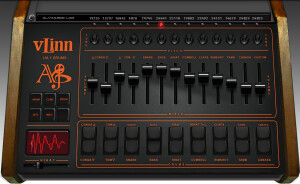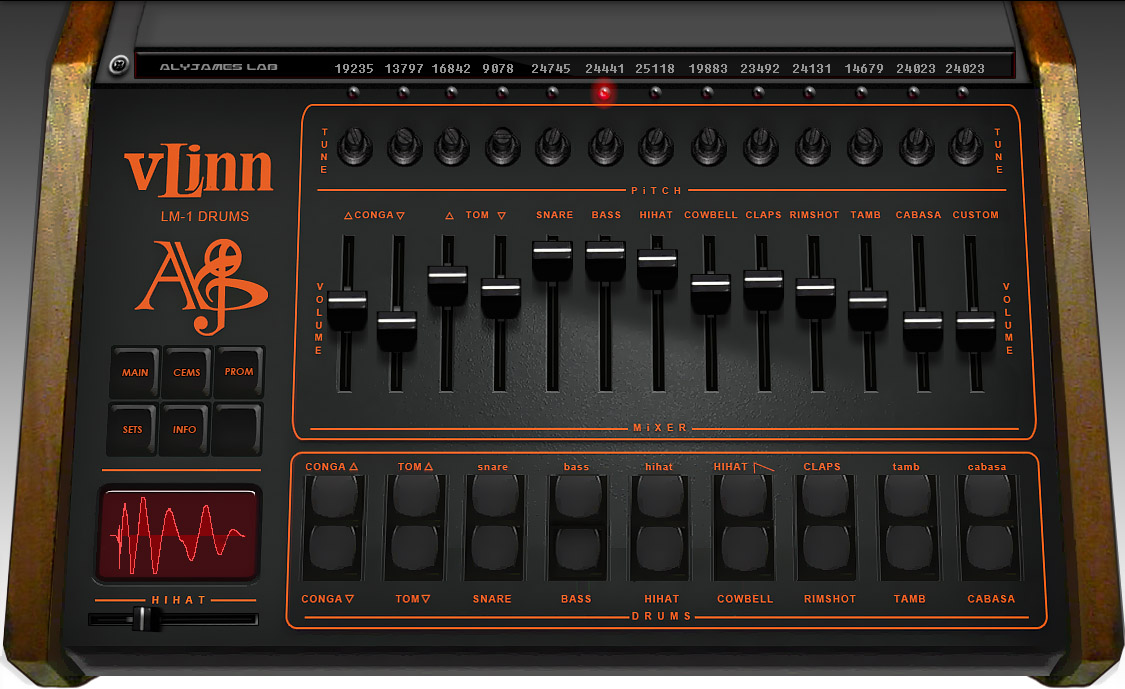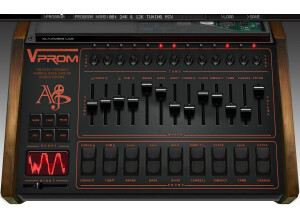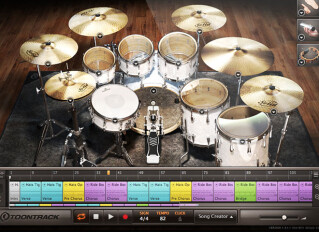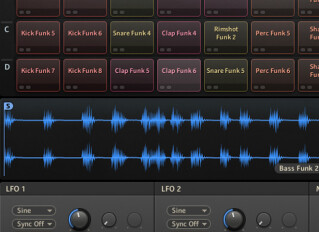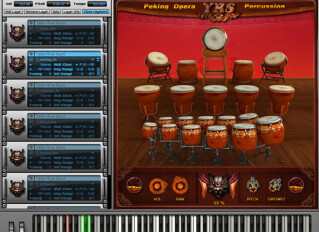Annonces VLINN LM1 DRUMS
Alerte nouvelle annonceForums ALY JAMES LAB VLINN LM1 DRUMS
News
Images
Vidéos
Avis
La LM-1 qu'il faut
Publié le 09/01/23 à 22:05- une section complete des sons originaux + 1 custom au choix
- des sons dont la hauteur est individuellement ajustable pour chaque son
- le choix de la version stereo ou multi canaux
- le choix entre entre la vélocité d'origine ou une vélocité continue.
Simplement la seule solution avec tout ça à la fois.
Fiche technique
- Fabricant : ALY JAMES LAB
- Modèle : VLINN LM1 DRUMS
- Catégorie : Synthés percussifs ou boîtes à rythmes virtuels
- Fiche créée le : 19/05/2014
VLINN LM1 DRUMS (Virtual Linn LM1) is an authentic Linn LM-1 VST which emulate all the character and internal circuitry of the legendary 1st sample based drum machine in History. The Linn LM-1 Drum Computer, invented by Roger Linn in the early 80s.
The Linn was the killer drum machine in town back in the early 80s. It has been used to shape the sound of major acts like: Prince, Phil Collins, Thompson Twins, Stevie Wonder, Gary Numan, Depeche Mode, The Human League, Michael Jackson etc... To this day the unique sound of that machine is highly regarded and only using samples of an LM-1 output cannot reproduce the wide range of sounds this machine can produce and especially the tuning feature and frequency content. The AM6070 DACs and the whole circuitry stands next to the samples characters in that unique sounding team.
Concept
The VLINN LM-1 DRUM VST provides the closest experience to the real thing because it is not based on samples, instead it accurately models the clocks and counters that reads EPROMS memory feeding the AM6070 DACs to decode the EPROMS data in real-time, models the CEM 3320 filters with tweak-able control over the CV pulses shapes to let more or less transient pass through unfiltered or completely bypass them, special hihat circuitry and VCA providing different hihat sound on each trigger and decay control, separate tuning for all voices with already a wider range without tweaking the electronics...separate outputs for your DAW, velocity handling etc...You will maintain that raw sound at every tune! On top of the cake 7+1 voices can be replaced with external EPROM data like on a real machine...Opening up a whole new range of sound, still being processed by the circuitry.
VLINN uses a custom C++ core and 3r party licensed code where nothing fancy was needed.
Runs on Windows 32/64-bit Systems and is multi-core compatible with 32-bit DAW/Host. OS X will be available next year.
VLINN is Donationware with a minimum of 15.00 €.
VLINN Features:
- AM6070 modeled real time DAC decoding: Following the exact datasheet decode table for 8bit companded incoming DATA. The real LM-1 nasty griddy sound at every pitch, like the real thing, forget resampling or tuning samples packs which will always sound dull at lower pitches.
- Hihat DATA looping & VCA: The LM-1 Hihat circuitry was pretty unique, the hihat proms were read constantly in a loop while only a VCA was triggered, for closed hihat the circuitry had the ability to discharge the current through an additional way based on the decay pot setting. This basically makes the hihat sounding different on every hit.
- CEM VCF filters: Unlike the very first produced LM-1 units, later revs had were filtering voices with bass frequency content to minimize the remaining 8-bit noise, using a CEM 3320 VCF configured as a lowpass filter with no resonance. The CV frequency of the VCF was shaped by the circuitry in a way that lets the transients pass through relatively unfiltered. The VLINN lets you fine tune the CV pulse or completely bypass the filter, this is useful when a voice is tuned very low or if you want to replace a "Bass" slot with another EPROM that doesn't require filtering.
- Separate pitch tuning: This is one of the coolest feature of the LM-1, letting you tune any voice to a particular frequency for a wide range of sounds. The EPROMS data were read one byte at the time by a counter which speed was controlled by a relatively stable oscillator, the counters reading speed could then be affected by the external tuning pots in a limited range of + or - 1 octave. This tuning range can be tweaked and the VLINN provides a useful wide range of pitch from 1000Hz to 44100Hz and anything in between based on a real mod.(stock was around 12048 - 30303Hz.).
- Separat outputs: The LM-1 featured separate outputs for every voices, so as the VLINN. You can choose from ALL to 1 Stereo Channel or Separate Channels for each voice in your DAW.
- Velocity control: You can limit yourself to only two velocity levels or use the full range of MIDI velocity for convenience.
- GUI & automation: The GUI features the original trigger buttons for quick listening and controls over every aspect of the drum machine, most of the parameters like volume and pitch knobs can be MIDI learned and controlled by an external MIDI Hardware.
- Loading external EPROMS DATA: The VLINN provides the ability to replace some voices with external compatible 8-bit companded EPROM data. Which opens up the machine to LINNDRUM (LM-2), LINN 9000, DMX, DX, DRUMTRACKS etc... samples or even load your own custom made. You can switch between custom loaded and stock EPROMS on the fly. VLINN Supports the following type and size EPROMS binaries (.bin):
- 2716(2048_Bytes) 2K.
- 2732(4096_Bytes) 4K.
- 2764(8192_Bytes) 8K.
- 27128(16384_Bytes) 16K.
- 27256(32768_Bytes) 32K.
LINN LM-1 Sequencer:
It was not needed to model the LM-1 sequencer because regardless of all the urban legends about it, it is mainly a 48 PPQN (pulse per quarter note) resolution thing. Modern sequencers and DAWs have a finer resolution usually around 960 PPQN or higher, this simply means that the same beat with some swing will not groove exactly the same at 960 or 48 PPQN... An easy thing to do is to export your beat in MIDI a 48 PPQN and import it back. The full technical explanation is available in the VLINN manual.
Autres catégories dans Batteries et percussions virtuelles
Autres dénominations : vlinnlm1drums, vlinn lm 1 drums, vlinnlm1 drums, vlinn lm1drums


